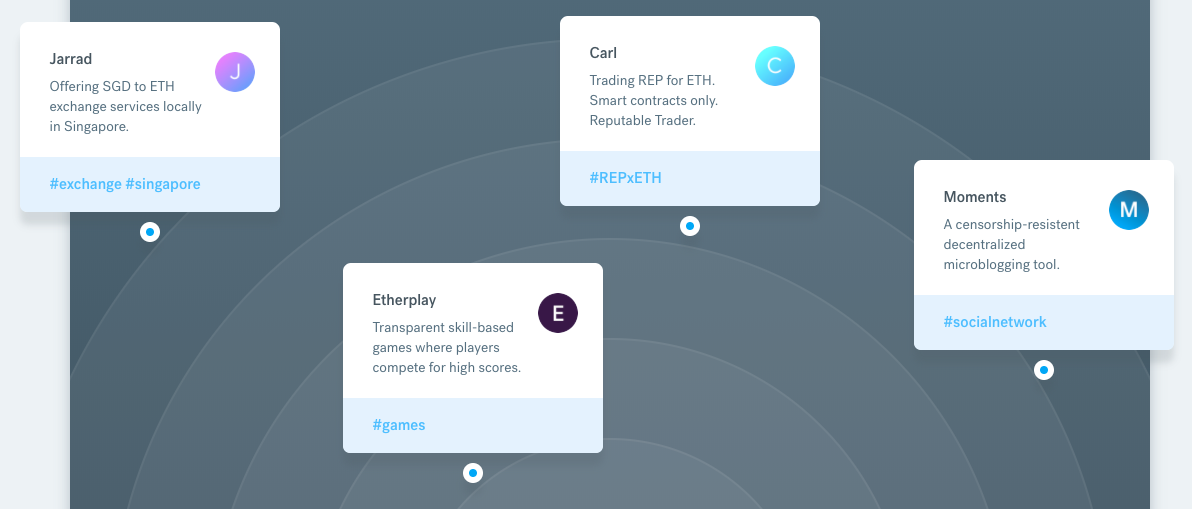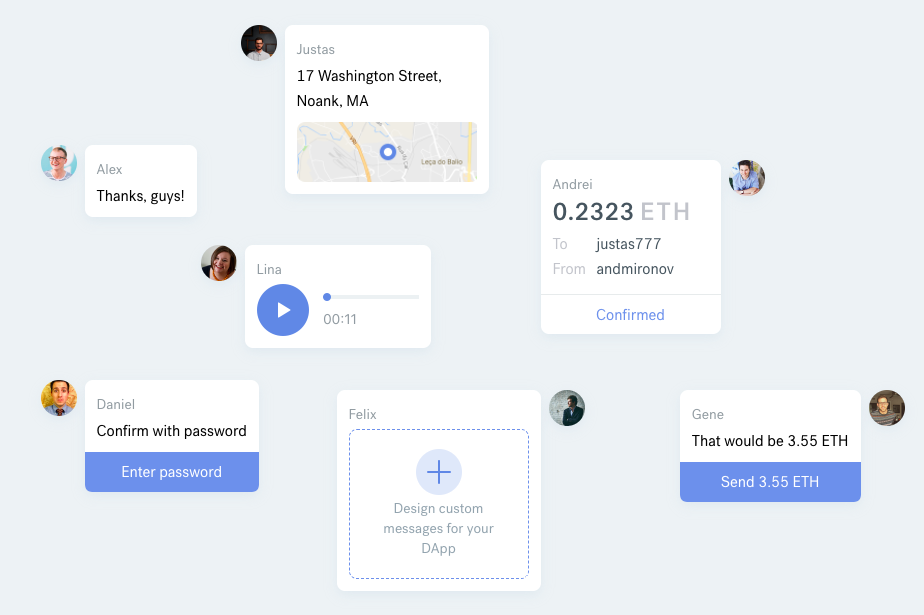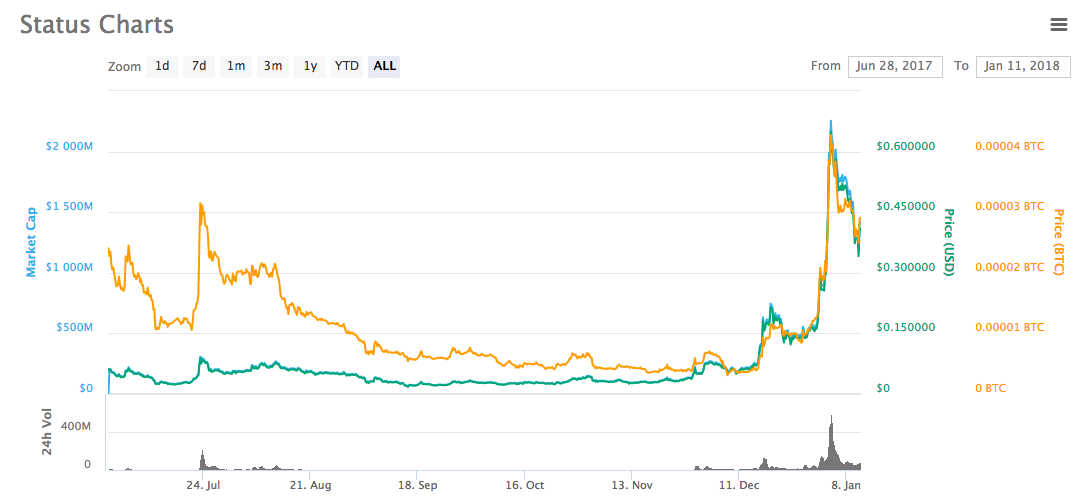Status is calling itself “the Ethereum discovery tool.”
You can think of Status as a mobile operating system built for Ethereum. Status enables your mobile device to become a light client node on the Ethereum network. The result? Access to Ethereum’s entire ecosystem from anywhere.
Status is striving to lower the barriers of entry on Ethereum, allowing mass adoption of the Ethereum blockchain in order to facilitate the transition to a more open internet.
What Does Status Do?
The creators behind Status are working towards bringing a decentralized world to life.
Status essentially combines a messenger and a browser that allows everyday smartphone users to use decentralized applications, also known as dapps. Status is available on both Android and iOS.
Status users can safely send, receive, and store Ether and other Ethereum crypto assets on their phone. They can also discover nearby Status users to exchange currency, services, and ideas locally.

Status is also an encrypted private messenger that allows you to send payments and smart contracts to friends from within chats, using a peer-to-peer protocol that doesn’t rely on centralized servers.
In both the US and globally, there are more people actively using messaging applications than even social media networks. The creators of Status took note of this, making the decision to give Status a focus on messaging and chats.
Status Co-Founder Carl Bennetts explained their rationale in a blog post:
It became clear that if we wanted to build a platform for users to interact with smart contracts, it would need to be social. Humans are social creatures, and Ethereum is a social technology.

Status is an open-source platform, which means anyone can list their dapp for download. If you have Status on your phone, you instantly have access to download a plethora of useful and ingenious dapps.
For example, you could download Ethlance, a decentralized job marketplace that allows you to hire or work for cryptocurrency, with no fees. And because it’s all open source, the Status community will be able to directly help shape and evolve Status to fit their exact needs. The sky’s the limit!
Right now, Status is in its alpha stage, with about 14,000 alpha downloads around the globe. The beta version is currently in the works.
Now let’s talk about the Status coin itself. The Status Network Token (SNT) is a modular utility token that fuels the Status network, adding value to the platform and driving network effects. SNT possesses an interesting feature—the ability to easily spawn new tokens that have the same balance distribution as the parent token at any given block number.
According to the Status team:
We’re strong believers in a culture of experimentation, and this model preserves fair contribution for early backers, without imposing rigid restrictions on the ability to test new SNT utility as the project evolves over time.
The Status platform is highly versatile and customizable, which means it will continue to transform over time. For more in-depth details about what Status is capable of, check out their whitepaper.
History of Status
The first time the world heard about the idea of Status was September 2016, at DevCon2, an annual conference for developers on the Ethereum blockchain. Co-founders Carl Bennetts and Jarrad Hope gave a presentation revealing the plans for their Ethereum light client.
On May 29, 2017, Status was announced to the public. Since then, nearly 14,000 people around the world have downloaded Status alpha, and over 50,000 people are on the current alpha waitlist.
In 2017, Status announced partnerships with both Sirin Labs and the Enterprise Ethereum Alliance.
The Status Team
Status co-founders Carl Bennetts and Jarrad Hope had been working together for 6 years on various software projects before deciding to start creating Status together.
Status started out as 8 core team members, headquartered in Singapore.
During 2017, however, the Status team exploded into 55 core team members working around the clock and around the globe.
In fact, the team is still growing. Interested in working with Status? Check out their current job openings.
Competitors and Challenges
A very similar project to Status is a platform called Toshi, which is also an open-source browser for the Ethereum network. Status does have an advantage over Toshi, however, as Status has a decentralized messaging system, while Toshi does not.
Most likely, the biggest challenge for Status right now is gaining mass adoption, and not just getting used by a small group of crypto geeks. Most of the world still doesn’t know what the blockchain even is, or why they would benefit from having a decentralized mobile operating system on their phone. Hopefully the team has a great marketing plan to spread the word about why the average person should move to use Status.
How to Purchase and Store SNT

SNT is currently available for trade on many online exchanges, including Huobi, Binance, and Bittrex. Click here for the full list of updated Status exchanges.
Alternatively, if you already have some ETH, then you can use Shapeshift to exchange your ETH into SNT.
SNT can be stored on any wallet that supports ERC20 tokens, such as MyEtherWallet.
The Status team is working on perfecting a Status Hardwallet, allowing safe, contactless transactions of ETH and ERC20 tokens. It’s currently in the beta stage.
Conclusion
While Status is still far from being everything its creators envision it to be, it is certainly on a clear path towards a bright and successful future.
In the words of co-founder Carl Bennetts,
Status is fully committed to making decentralization a reality. We are aware that there are challenges and there is a lot of work to be done, but our goal remains to create an Ethereum-powered world for all. We will continue to invest ourselves in the future of blockchain and push to build a strong open source community.

